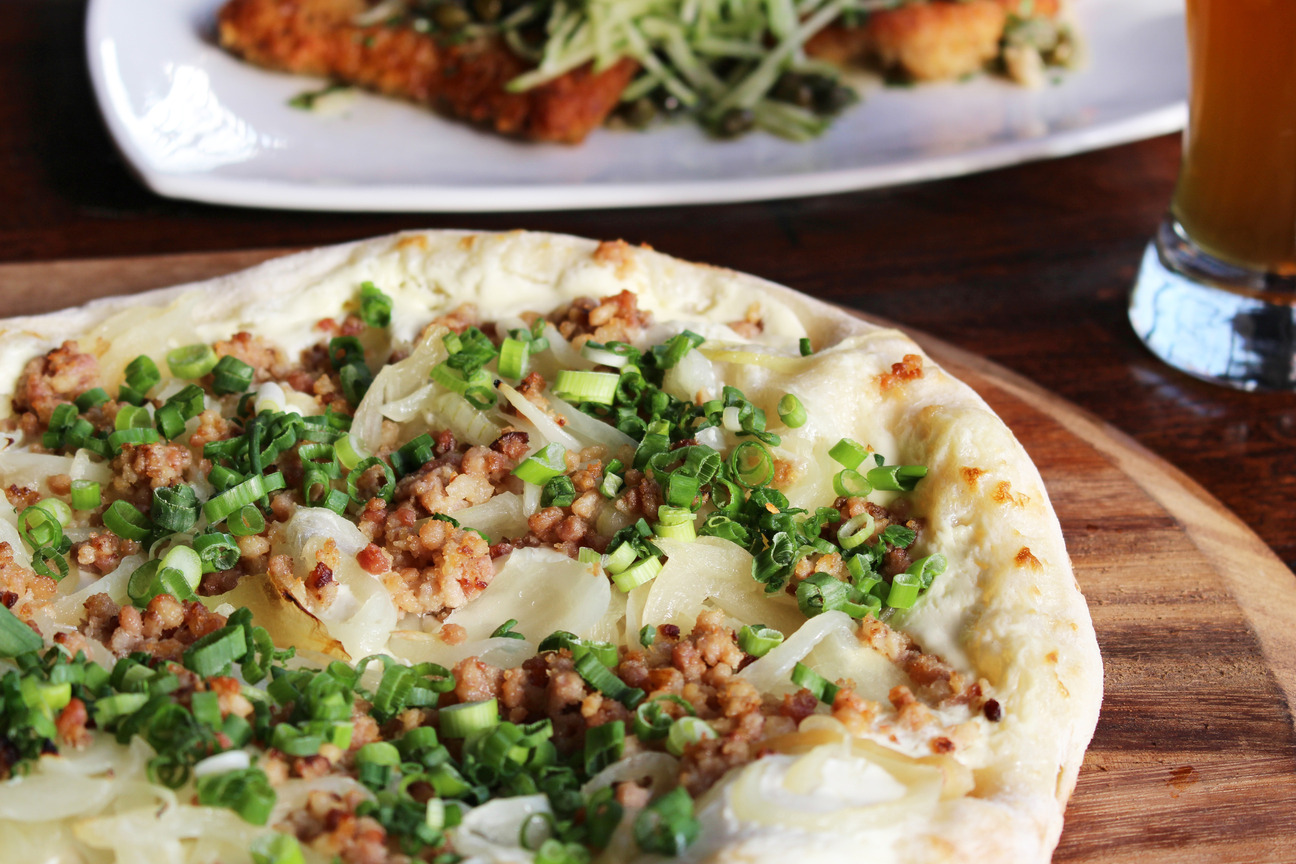The Local newsletter is your free, daily guide to life in Colorado. For locals, by locals.
No disrespect to your parents, but they were wrong to insist you couldn’t survive on pizza alone. When you consider the sheer multitude of pizza-esque specialties around the globe—from Turkish pide and Mexican tlayudas or huaraches to Argentine fugazza, Provençal pissaladière and Hungarian lángos—it’s obvious flatbreads could indeed sustain you for life. Not only do they typically involve ingredients from every basic food group, they also cover just about every flavor profile to boot. Take two of my favorites: Germany’s flammkuchen and manakeesh (to pick just one of myriad transliterations) beloved throughout the Eastern Mediterranean, particularly Syria and Lebanon. Though completely different, each showcases tangy dairy products and spices that remain little appreciated stateside.
Flammkuchen vacillates somewhere between an identical twin and a kissing cousin to the savory Alsatian tart called flammeküeche or tarte flambée. The French version usually comes topped with crème fraîche or fromage blanc, lardons, and onions. While the German flammkuchen is often topped with similar toppings, cooks there may instead substitute cultured dough for regular, use sour cream for a stronger tang, or sprinkle the final product with caraway—one of the most unjustly maligned flavorings in the American spice rack, in my opinion.

Prior to opening the Seattle flagship of Rhein Haus—which now has an outpost in Denver—executive chef Pete Fjosne spent several weeks touring the beer halls and gardens of Munich, where he picked up a few tips and tricks for making the so-called “flame cake.” For one thing, his crust relies on a sourdough starter; for another, he whisks yolks into the sour cream he dollops on top “so it doesn’t just liquefy into the dough.” And finally, he opts for scallions in a nod to the Münchner preference he observed for chives over yellow onions. He does, however, stick with house-smoked bacon rather than speck, the gently smoked ham that the Germans also sometimes substitute. To complete the hearty picture, Fjosne recommends a contrastingly light, crisp glass of Kölsch.

By contrast, manakeesh are “often eaten for breakfast in Lebanon with black tea,” to quote The Lebanese Cookbook author Hussein Dekmak. The gold standard of toppings for their pita-like base is za’atar, a wonderfully earthy spice mix featuring thyme, sesame seeds, and the tart ground fruit of the sumac plant. Additional zing frequently comes from the lactic acid in the thick, richly creamy strained yogurt called lebni or labneh—which can also play a starring role, with or without a drizzle of honey. Other toppings often include minced lamb or beef sprinkled with pine nuts—at which point the dish may be labeled lahmacun or lahmbajeen or perhaps even fatayer (although the latter more commonly applies to stuffed savory pastry). Confused? Don’t fret: here in Denver, manakeesh are likely to appear on Middle Eastern menus as “pizza” or simply “pie.”
Try It: Order the $16 traditional Flammkucken at LoDo’s Rhein Haus (1415 Market St., 303-800-2652) for a taste of the German specialty.
As for manakeesh, both Amir Grill in Golden (103 N. Rubey Drive, Golden, 303-278-1011) and Amira Bakery in Denver (4101 E. Evans Ave., Unit B, 303-756-7700) offer a variety of toppings for the Middle Eastern flatbread.








